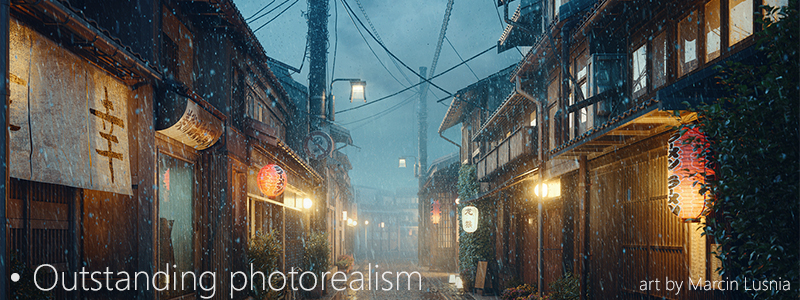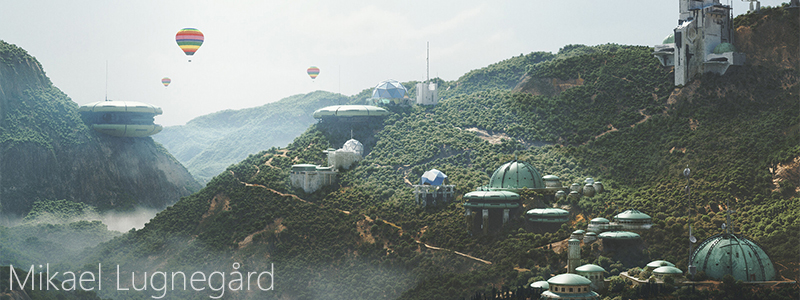What is FStorm Render?

FStorm Render is the fastest GPU rendering engine, utilizing pure brute-force path tracing to produce sharp and clean lighting, free from interpolation artifacts and animation flickering. Its in-house built BRDF, combined with multiple light sampling, maintains a low noise level even with a minimal number of samples. Adaptive pixel sampling accurately redistributes computing power to noisy areas of the rendered image, further enhancing rendering speed.

The product is easy to learn, requiring minimal training. Its simple, flexible, and well-designed rendering parameters provide an intuitive user experience. Additionally, the built-in scene converter enables a seamless and efficient transition of existing scenes from other rendering engines.

FStorm Render offers the highest memory efficiency for storing geometry and textures. Its optimized GPU memory management allows 24GB of GPU memory to achieve the equivalent performance of 96GB of CPU memory in modern CPU-based rendering engines. With 24GB of GPU memory, FStorm Render can process up to 500 million unique polygons and manage 25 gigapixels of textures using its built-in bitmap compression.

FStorm Render’s unique tone mapping ensures a natural appearance regardless of lighting conditions or materials used. Its pure path-tracing technology delivers clean and realistic global illumination and shadows, while adaptive sampling generates soft, photographic-quality image noise.
FStorm Render is exceptionally stable, capable of running intensively for months without a single crash. The software undergoes continuous improvements based on user feedback to ensure optimal performance:
• Improvements from v1.3.6 to v1.5.3 • Improvements from v1.3.3 to v1.3.6
• Improvements from v1.2.5 to v1.3.3 • Improvements from v1.1.1 to v1.2.5
FStorm Render is widely used by 3D artists across various industries, including architectural design, the automotive sector, and advertising. Its rapidly growing community actively shares knowledge and experiences, contributing to the software’s ongoing development. Here are stories from some FStorm users:

www.pm-studio.eu
https://www.instagram.com/pm.studio.eu
https://www.behance.net/info48e6b3b5
I'm Marcin from Poland and I have been interested in 3D graphics for over 20 years. Together with my brother in 2010 founded P&M Studio, where we specialize in architectural visualizations.
I have been using the FStorm renderer since the first version, I really liked its simplicity and how easily I can get the desired effects in a short time. The biggest advantage of FS is the speed of rendering and the simple interface. There are many useful functions that make work easier, I recommend checking it out! It is also very important to me that the program is developing very quickly and now, after a few years of the program's creation, you can perform advanced visualizations, and we are limited only by the vram memory capacity of the graphics card.
I think GPU rendering is the future of 3D visualization due to the rendering speed.
https://www.artstation.com/mlld_design
https://behance.net/Mlugnegard
https://instagram.com/mllugnegard
Been doing visual art for 20 years professionally. Got my background in industrial design and visual development. Worked in games for the last 5 years, now freelancing full-time. Very passionate about story-telling and narrative driven art.
I use Fstorm cause it's superfast and great when you value FAST render response and the ability to tweak materials with direct update. It's also very easy to use, even in complex scenes. I find it especially good for architecture and concept images.
Once you started rendering with GPU, going back to CPU based engines is hard. The response and feedback just isn't the same, GPU feels much more fluid.

https://behance.net/vitalienes
We at Raw Concept find Fstorm to be an exceptionally fast and stable GPU renderer with simple settings that streamline our workflow. Its economical memory usage and high photographic quality output make it the ideal tool for our high-performance projects, and although it currently lacks caustics and full VDB support, these limitations are not critical for our needs.
GPU solutions offer greater flexibility because you can upgrade the graphics card independently, allowing for quick adoption of newer generations without overhauling the entire system.
https://phaase.eu/
https://www.artstation.com/paulhaase
https://phaase.eu/portfolio
I'm Paul Haase, a 3D Generalist and Technical Director born and raised in Berlin, Germany. My passion for 3D began at age 12 with the Valve Hammer Editor, and a memorable introduction to 3dsMax 6 at a LAN party solidified my dream of becoming a game developer. Although I initially explored several academic paths, I eventually focused on Game Design and 3D Design, successfully completing my studies.
I spent several years in the industry, where I developed a broad skill set, and eventually transitioned to a freelance career as a generalist. Throughout my professional journey, I've had the opportunity to work in various industries such as architecture, automotive, product design, stage design, and scenography. This diverse experience has enabled me to collaborate with renowned clients like Balenciaga, Nike, Kanye West, Travis Scott, BMW, Mercedes, and Porsche.
I started using FStorm right from its early beta phase. Even though it was somewhat limited back then, its ease of use was evident, and that simplicity is one of its greatest strengths—it's the very reason I stuck with it.
FStorm's capabilities are impressive, and its structured workflow sets it apart from other renderers. For instance, rather than relying on a separate triplanar node, FStorm allows you to select triplanar mapping directly within the Bitmap settings. This intuitive approach not only makes testing faster but also keeps material trees much more streamlined.
Another key advantage is how FStorm handles light sources as geometry. This feature lets you create lights simply by applying a light material, enabling the scattering of light across a scene. Consequently, you don't need to manually place individual lights for every area; you can just apply the material to all the lights in a room, even if they were pre-arranged by an architect.
To top it off, FStorm consistently delivers new features and technologies in a polished, complete state. For example, while many renderers still rely on 2D decals, FStorm introduced decals ready for curved surfaces back in 2019.
The only downside I currently see with FStorm is its lack of VDB support. While it does offer a capable volumetrics workflow, it doesn't fully integrate real VDB data and is limited by a resolution cap.
In my opinion, GPU rendering marks a monumental leap in CGI—not just for its speed, but for its scalability as well. A few years ago, I built a system with four GPUs in a single case, and it performed flawlessly. This setup eliminates the need for the cumbersome network rendering across multiple machines, streamlining workflows and reducing the usual hassles associated with distributed rendering.
Moreover, GPU rendering offers significantly better resource utilization compared to CPU rendering. While CPUs, regardless of how many cores they have, can slow down your system when handling intensive rendering tasks, GPUs allow you to continue running demanding applications or even games in the background without compromising performance. This combination of speed, efficiency, and multitasking capability is what truly sets GPU rendering apart as a revolutionary advancement in the CGI field.
FStorm Render is available for $30 per month and includes a floating license. An unpaid license does not restrict rendering; instead, it introduces subtle watermarks and can be used for educational purposes and experimentation.